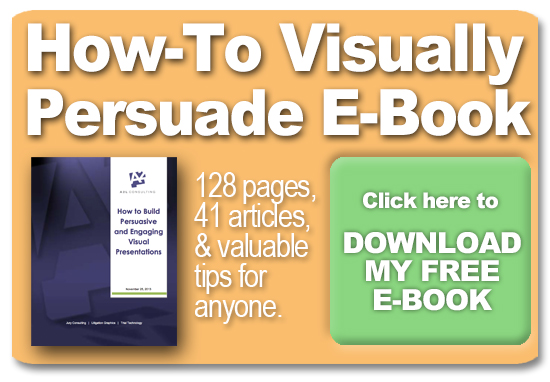by Alex Brown
Director of Operations
(former) A2L Consulting
I read an article today that can be applied to our industry so well that I thought I should apply its lessons. The article was written by Eddie Shleyner and is titled: How to Defeat Your Most Dangerous Writing Habit: 7 Ways to Lift 'The Curse of Knowledge'
The article highlights the concept of being cursed due to knowing too much. The issue refers to someone who has studied a subject so thoroughly that it becomes difficult to explain it to people who don’t know as much about the subject.
As an example, he discusses the book, Made to Stick, where the Heath brothers provide an example: “Think of a lawyer who can’t give you a straight, comprehensible answer to a legal question. His vast knowledge and experience renders him unable to fathom how little you know. So when he talks to you, he talks in abstractions that you can’t follow. And we’re all like the lawyer in our own domain of expertise.”
Cognitive bias is what we are talking about. Shleyner notes that this is particularly dangerous to writers, since in conversation, a listener can ask questions to clarify the issue. But litigators, when giving an opening or closing statement, are in the same boat as writers since they are unable to ask or receive questions from their audience.
So, how can you defeat this curse? Ironically, more knowledge is the answer. The more you know about the curse, the less likely you will succumb to it and the more persuasive you will be. Let’s take a look at his seven best practices to combating this curse and apply them to our industry.
Jury Research. Focus Groups, Mock Exercises. Basically, you need to know your audience. Not only to know how they think, but why, what, who, where and the often forgotten wow. Learn how they think, learn the history to know why they think this way, but most importantly, figure out how to say it in a way that will wow them and be remembered.
Like It or Not: Likability Counts for Credibility in the Courtroom
5 Reasons Why Jury Consulting Is Very Important
Group Psychology, Voir Dire, Jury Selection and Jury Deliberations
2. Tone down your vocabulary.
 Speak to the audience, not at the audience. A sure way to do this is to talk to them in a way that they will not only be able to understand, but also remember. Last night I was working on AP Psychology with my oldest (a junior in high school) and we were discussing the structure of the brain and the nervous system, specifically the identification of synapse gaps and the different interfaces. I used the concept of roundabouts and how they connect roads. It fits but I did not consider the audience, since my daughter does not drive yet. My wife talked about soldering and it clicked since my daughter is doing that currently in her mechanical engineering class. Remember to speak “to” your audience, not “at” or “down” to them.
Speak to the audience, not at the audience. A sure way to do this is to talk to them in a way that they will not only be able to understand, but also remember. Last night I was working on AP Psychology with my oldest (a junior in high school) and we were discussing the structure of the brain and the nervous system, specifically the identification of synapse gaps and the different interfaces. I used the concept of roundabouts and how they connect roads. It fits but I did not consider the audience, since my daughter does not drive yet. My wife talked about soldering and it clicked since my daughter is doing that currently in her mechanical engineering class. Remember to speak “to” your audience, not “at” or “down” to them.
21 Steps I Took For Great Public Speaking Results
8 Habits of Successful and Persuasive Public Speakers
3. Tell a story.
At least 65% of your audience will be or consider himself or herself a visual learner. This means that they relate better and retain information at a higher rate through visuals or graphics. No matter how well you can paint a picture with words, the majority of your audience actually wants pictures. So that’s what you give them.
Litigators, Portray Your Client As a Hero In 17 Easy Storytelling Steps
6 Ways to Become a Better Storyteller
10 Videos to Help Litigators Becme Better at Storytelling
Storytelling Proven to be Scientifically More Persuasive
4. Ditch the abstractions.
Abstraction involves induction of ideas or the synthesis of facts into one general theory. It is the opposite of specification, which is the analysis or breaking-down of a general idea or abstraction into concrete facts. Basically, give examples that are concrete. Example:
ABSTRACT: Americans must be willing to protect our freedoms.
CONCRETE: Voters must protect their Fourth Amendment right against illegal searches and seizures by calling or writing their representatives to protest the administration's warrantless wiretapping program.
5. Provide examples.
Unlike abstractions, examples put concepts into perspective. In one of our cases involving alleged improper laddering transactions, the client was envisioning an abstract concept of showing a runner in a marathon jumping ahead and how in essence the opposition was intimating that this affected all the other racers in a way that was unfair or even illegal. We struggled with the concept because we could not guarantee that everyone who saw this would go down the same path and reach the same conclusion. Instead, we came up with the “dots” slide, which ended up appealing to the jurors’ sense of logic and was memorable.

As you can tell, this was done a few years ago, but it does not diminish the impact. Examples based on concrete concepts are usually more persuasive then abstract concepts.
6. Use visuals.
Bullet points are not visuals. Visuals reinforce the message and they are not meant to be redundant reiterations of what you are saying. Here are some good examples in these photos.

12 Reasons Bullet Points Are Bad
Should You Read Documents Out Loud at Trial?
Could Surprise Be One of Your Best Visual Persuasion Tools?
When we are creating images/graphics for the matters we are supporting, we always discuss it amongst ourselves, the clients, strangers passing by… pretty much everyone. Not because we are worried or just want to show off, but because the input is invaluable to get the most persuasive graphic for our audience to connect with and understand. Why would it be different when considering your opening, closing or witness interviews or cross. Get people together to hear and see what you are planning on saying. Use peers and A2L in a MicroMock so we can review the message, and how you are delivering it.
Introducing a New Litigation Consulting Service: the Micro-Mock
With So Few Trials, Where Do You Find Trial Experience Now?
3 Ways to Force Yourself to Practice Your Trial Presentation
Other A2L Consulting articles and free resources about cognitive bias and persuasion:
- Font Matters - A Trial Graphics Consultant's Trick to Overcome Bias
- When Smart Ain’t So Smart - Cognitive Bias, Experts and Jurors
- I’m Right, Right? 5 Ways to Manage Juror Bias
- 5 Ways the Economic Crisis Has Changed Jurors
- Are Jurors on Your “Team”? Using Group Membership to Influence
- FREE DOWNLOAD: Tips for Mock Trials and Using Jury Consultants
- A2L Voted Best Jury Consultants by Readers of LegalTimes
- 5 Questions to Ask in Voir Dire . . . Always
- 10 Signs of a Good Jury Questionnaire
- 16 PowerPoint Litigation Graphics You Won't Believe Are PowerPoint
- 10 Things Litigators Can Learn From Newscasters
- Is Hiring a Jury Consultant Really Worth It?
- 7 Tips to Take “Dire” out of Voir Dire
- Jury Selection and Voir Dire: Don't Ask, Don't Know
- Could Surprise Be One of Your Best Visual Persuasion Tools?






Leave a Comment